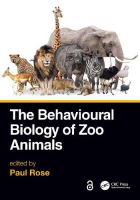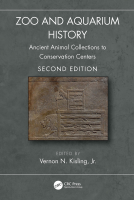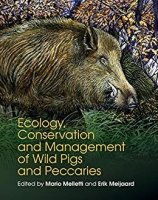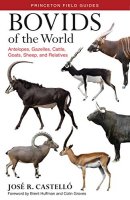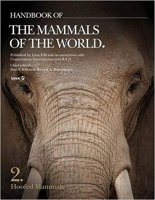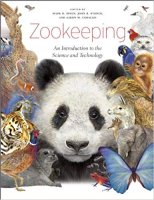STATEMENT OF PURPOSE
ABOUT THE AUTHOR
 Brent Huffman holds a Bachelor of Science degree
in Zoology (Honours) from the University
of Guelph (Ontario, Canada). He is a member of numerous zoological organizations, including ASM (American Society of Mammalogists), AAZK
(American Association of Zoo Keepers), and AZA (Association of Zoos and Aquariums), and is a member of the IUCN SSC Asian Wild Cattle Specialist Group and the AZA Ungulate Taxon Advisory Groups. He is currently employed as the Lead Keeper of Mammals at the Toronto Zoo.
Brent Huffman holds a Bachelor of Science degree
in Zoology (Honours) from the University
of Guelph (Ontario, Canada). He is a member of numerous zoological organizations, including ASM (American Society of Mammalogists), AAZK
(American Association of Zoo Keepers), and AZA (Association of Zoos and Aquariums), and is a member of the IUCN SSC Asian Wild Cattle Specialist Group and the AZA Ungulate Taxon Advisory Groups. He is currently employed as the Lead Keeper of Mammals at the Toronto Zoo.
Brent is an avid wildlife photographer, and has traveled to numerous exotic locales in search of rare ungulate species, including Zanzibar for Aders's duiker; India for pygmy hogs, red serow, and wild water buffalo; Ethiopia for walia ibex and mountain nyala; and Gabon, Equatorial Guinea, and Cameroon in search of duikers, water chevrotain, and forest buffalo.
Published works include contributions to The Behavioural Biology of Zoo Animals (2022, CRC Press - coauthor, chapter "Behavioural biology and the future zoo: Overall conclusions"), Zoo and Aquarium History, 2nd Edition (2022, CRC Press - chapter: "Zoological Gardens of Canada"), Ecology, Conservation, and Management of Wild Pigs and Peccaries (2017, Cambridge University Press - coauthor, chapter: "Red River Hog"), Bovids of the World (2016, Princeton University Press - foreword), Encyclopaedia Britannica, Handbook of the Mammals of the World, Volume 2: Hoofed Mammals (2011, Lynx Edicions), and the textbook Zookeeping: An Introduction to the Science and Technology (2013, University of Chicago Press - chapter: "Hoofstock Husbandry and Care").
Brent was a consultant for the 2020 Guinness Book of World Records, reviewing the accuracy of ungulate records. Other credits include coauthoring IUCN Red List species accounts, consulting for the BBC's "Life of Mammals" series, publishing zoo ungulate management articles for several professional organizations, and providing photographs for numerous scientific articles, popular publications, and WWF stamp issues.
HISTORY
PAGE FORMAT
| Quick Facts | Detailed Information | References | ||
To streamline browsing and make information more accessible, the accounts for individual species are being reorganized to include tabbed browsing. Each species will have up to three tabs, providing ready access to brief information ("Quick Facts" - the default page for each species), scientifically written and referenced accounts ("Detailed Information" - not present for all species), and a list of the literature used in the creation of the pages as well as a list of other resources available ("References").
GRAPHICS
For more information on using photographs, please check out the terms of image use.

